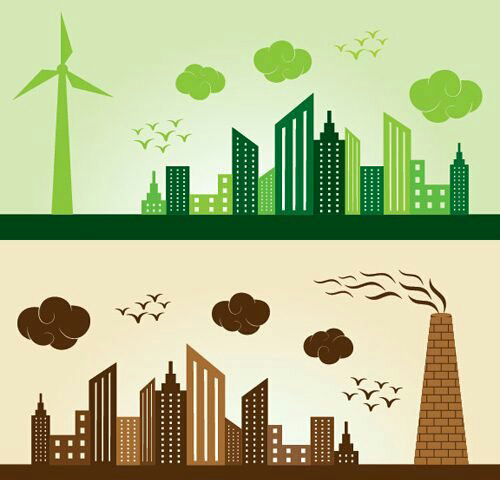Reproduction
This process is usually slow and complex compared to asexual reproduction. The organisms so produced are genetically diverse. Thus, they can evolve along with the changing climatic conditions. Humans and many multicellular organisms exhibit a sexual mode of reproduction.
Reproduction in plants :- Plants reproduce by sexual and asexual means. Vegetative reproduction is the main mode of plant reproduction. Roots such as a corm, stem tuber, rhizomes and stolon undergo vegetative propagation.
Sexual reproduction in plants takes place through pollination in which the pollen grains from the anther of a male flower transfer to the stigma of the female flower.
Few plants produce seeds without fertilization and the process is called apomixis. Here, the ovule or the ovary gives rise to new seeds.
The reproductive parts of plants are flowers, Stamen being male reproductive part and pistil being the female reproductive part. If one of these reproductive parts are present in a flower, it is said to be a unisexual flower. Example: papaya. If both Stamen and Pistil are present in flowers they are called bisexual flowers. Example: rose.
Pollen grains form the male gametes. The pistil consists of style, stigma, and the Ovary. The ovary consists of one or more ovules. Ovules are where female gametes or the egg is formed. Female and male gametes fuse to form a zygote.
Pollination
When pollen is transferred from the anther to the stigma of a flower through carriers such as insects it is called pollination. It can be a case of self-pollination if pollen lands on the stigma of the same flower or another flower of the same plant. If pollen grains land on the stigma of a flower of a different plant, but of the same kind, it is called cross-pollination.
Fertilization
A zygote is formed as a result of the fusion of gametes which later develops into the embryo. Fruits and seeds are formed post-fertilization. Ripened ovary goes on to become a fruit. Ovules give rise to seeds which contain the embryo in a protective covering.
Reproduction in animals :- The process in which the male and female gametes fuse together to form a new individual is called sexual reproduction. Let us have a brief account of the human reproductive organs and their role in reproduction.
Reptoductive Organs :- The male reproductive organs comprise a pair of testes, sperm ducts, and a penis. The sperms are produced by the testes. The sperms are very small in size with a head, a middle piece, and a tail.
The female reproductive system comprise a pair of ovaries, oviducts, and the uterus. The eggs (ova) are produced by the ovaries. The development of the baby takes place in the uterus. A mature egg is released into the oviduct every month.
Process of Sexual Reproduction in Animals
Fertilization :- The semen contains millions of sperms. A single sperm fuses with the ova during fertilization. The nuclei of the egg and the sperm fuse together to form a single nucleus. Thus, a zygote is formed.
Fertilization is of two types:
- Internal Fertilization
The fertilization that takes place inside the body of the female is known as internal fertilization. For eg., humans, cows, dogs, etc. This method is more prevalent in terrestrial animals. However, some aquatic animals also adopt this method. This may take place by direct introduction of sperms by the male in the female reproductive tract, or the male deposits the sperms in the environment which is picked up by the female in her reproductive tract.
They are three ways by which offsprings are produced by internal fertilization:
Oviparity– The fertilized eggs are laid outside, where they receive nourishment from the yolk.
Ovoviviparity– The fertilized eggs are retained in the female’s body where they receive nourishment from the yolk. The eggs are laid right before they are hatched.
Viviparity– The offsprings are born directly instead of hatching from the eggs. They receive nutrition from the mother. This can be seen in mammals.
- External Fertilization
The fertilization that takes place outside the female is called external fertilization. For eg., frogs, fish. Most fertilization takes place during the process of spawning. The environmental signals such as water temperature trigger spawning.
Embryo Development
The zygote divides repeatedly to form a ball of cells. This is known as the developing embryo. These cells differentiate into respective tissues and organs. The embryo gets implanted in the uterine wall. This process is known as implantation.
When all the body parts of the embryo start being visible, it is called a foetus. The child is developed after nine months in humans.Viviparous and Oviparous Animals
Oviparous and viviparous animals are two different groups of animals, which are classified on the basis of fertilization. The main difference between oviparous and viviparous animals are listed below:
| Oviparous | Viviparous |
| Meaning | |
| Egg-laying animals | Animals that give birth to the young ones |
| Fertilization | |
| Either internal or external | Fertilization is internal |
| Nutrients to the developing embryo | |
| Provided by the egg yolk | Provided by the mother through the placenta |
| Development of zygote | |
| There is very little or no development of the embryo inside the mother. | The embryo develops entirely inside the mother. |
| Survival chances | |
| There are fewer chances of survival since the eggs are laid outside the body | The young one is protected inside the mother and so the chances of survival are more. |
| Examples | |
| Insects, hens, fish, amphibians. | Humans, dogs, cats, horses, etc. |




























Mast hai
ReplyDelete